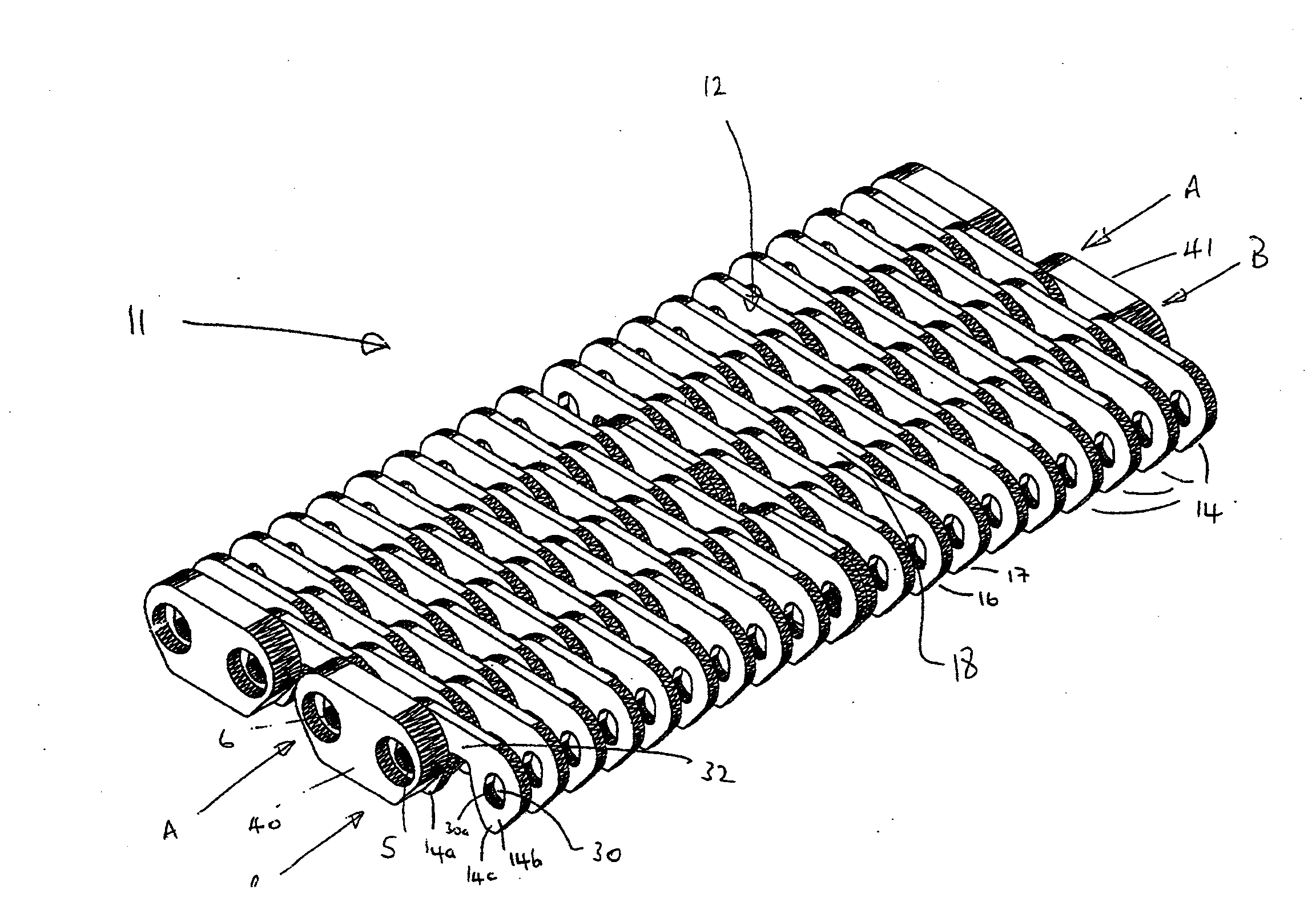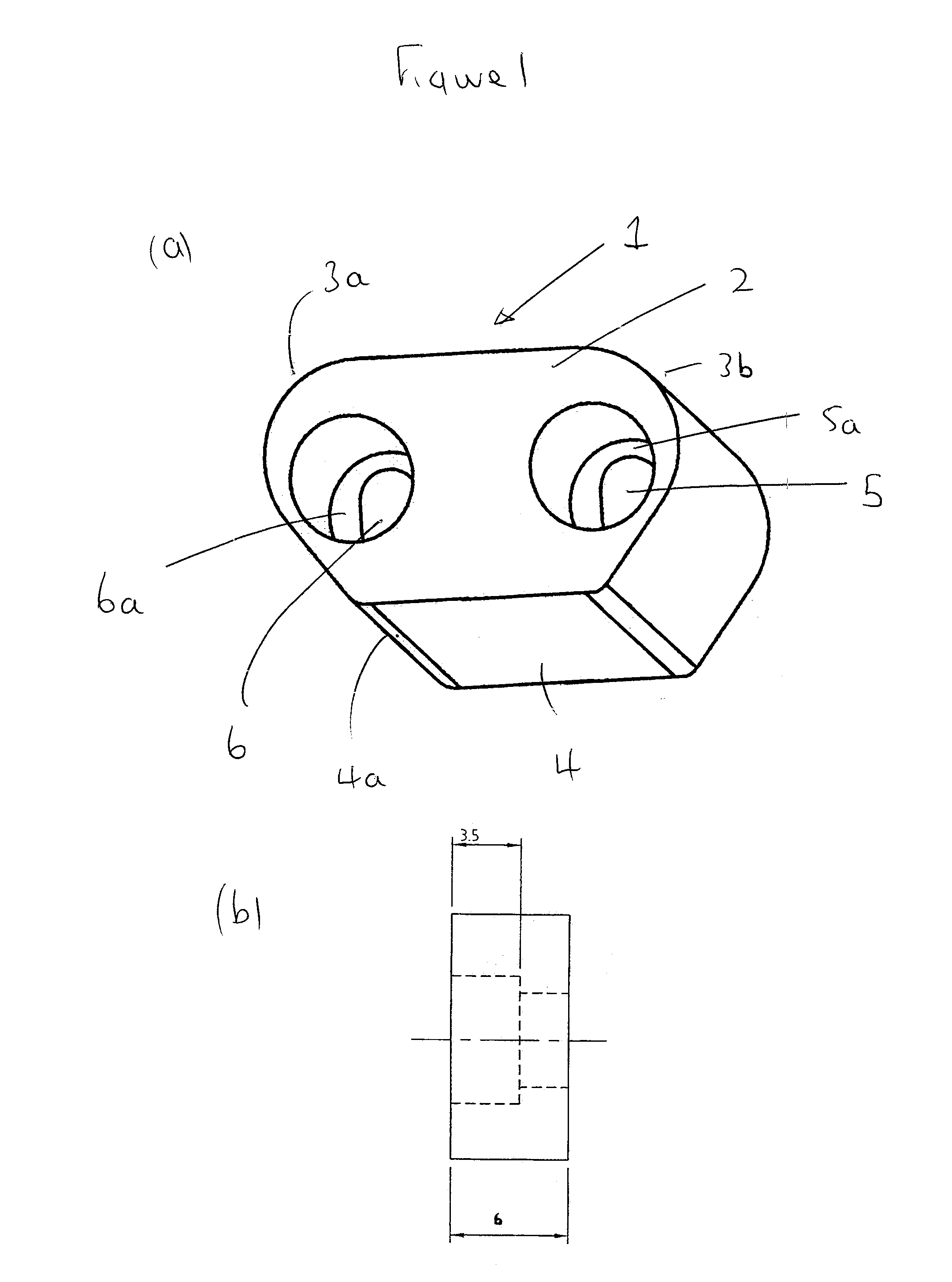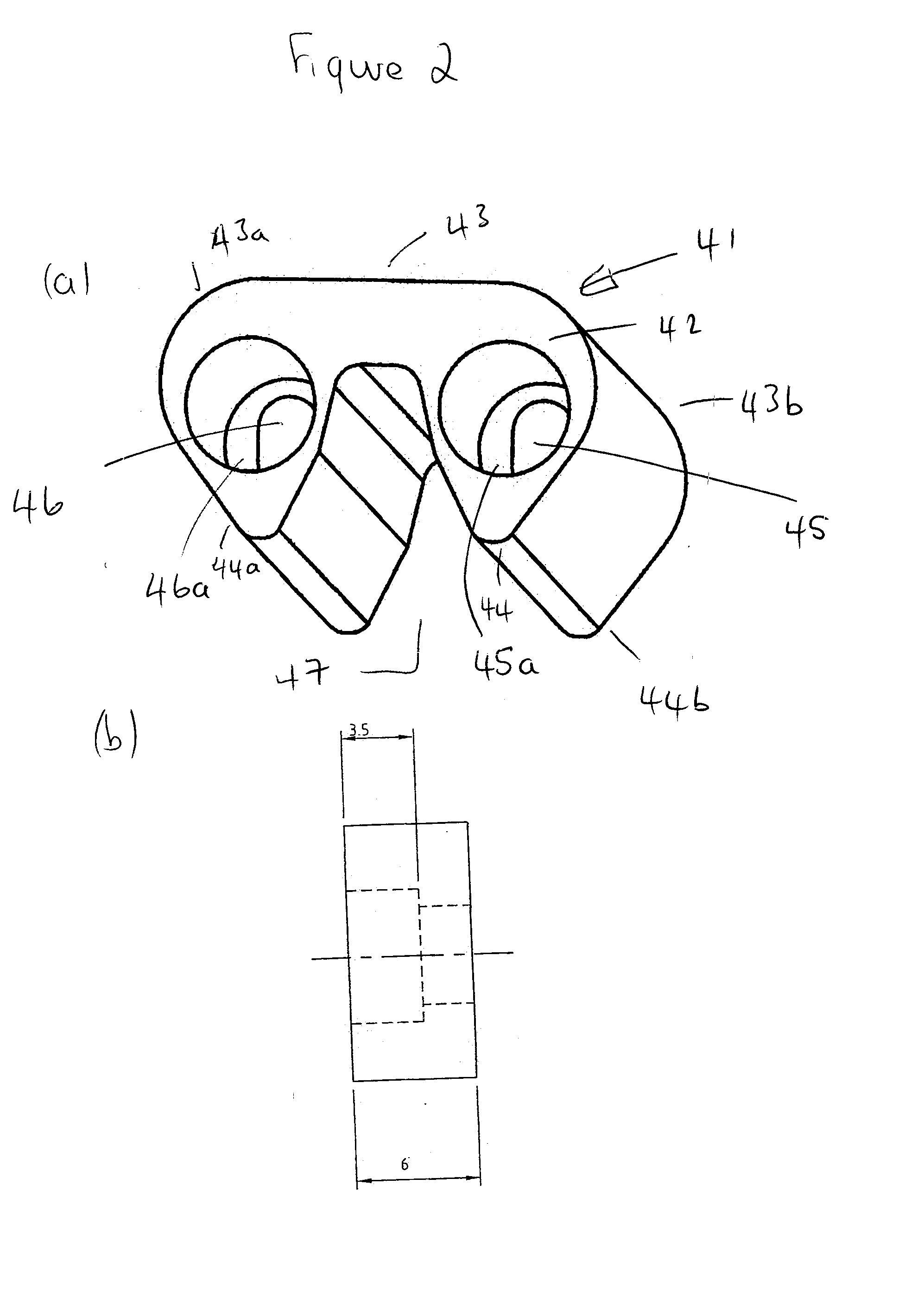Enclosure member
a technology of enclosing member and enclosing body, which is applied in the field of enclosing member, can solve the problems of compromising the performance of the chain, and achieve the effect of improving the stability of the container
- Summary
- Abstract
- Description
- Claims
- Application Information
AI Technical Summary
Benefits of technology
Problems solved by technology
Method used
Image
Examples
first embodiment
[0061]FIG. 1 illustrates the enclosure member of the invention designated generally by reference numeral 1. The enclosure member 1 is used in multi-guide conveyor chains and has a thickness of 6 mm. The enclosure member 1 comprises a trapezoidal main body 2 having a long side 3 parallel to a closed short side 4. The corners 3a and 3b of the long side 3 are rounded off (and to a lesser extent so are the corners 4a and 4b of the short side 4). The main body 2 defines a first non-circular aperture 5 and a second non-circular aperture 6, each of which are elliptical and provided with a cylindrical counterbore 5a and 6a respectively. The counterbores 5a and 6a are non-tapered and have a depth of 3.5 mm.
second embodiment
[0062]FIG. 2 illustrates the enclosure member of the invention designated generally by reference numeral 41. The enclosure member 41 is used in centre guide chains and has a thickness of 6 mm. The enclosure member 41 comprises a trapezoidal main body 42 having a long side 43 parallel to an open short side 44. The open short side is defined by a deep U-shaped cut-away portion 47. The corners 43a and 43b of the long side 43 are rounded off (and to a lesser extent so are the corners 44a and 44b of the short side 44). The main body 42 defines a first non-circular aperture 45 and a second non-circular aperture 46, each of which are elliptical and provided with a cylindrical counterbore 45a and 46a respectively. The counterbores 45a and 46a are non-tapered and have a depth of 3.5 mm.
third embodiment
[0063]FIG. 3 illustrates the enclosure member of the invention designated generally by reference numeral 31. The enclosure member 31 is used in side guide chains and has a thickness of 6 mm. The enclosure member 31 comprises a trapezoidal main body 32 having a long side 33 parallel to a closed short side 34. The corners 33a and 33b of the long side 33 are rounded off (and to a lesser extent so are the corners 34a and 34b of the short side 34). The rear face of the main body 32 is partially recessed with a substantially U-shaped recess 432. The main body 32 defines a first non-circular aperture 35 and a second non-circular aperture 36, each of which are elliptical and provided with a cylindrical counterbore 35a and 36a respectively. The counterbores 35a and 36a are non-tapered and have a depth of 3.5 mm.
[0064]FIG. 4 illustrates in partial view an embodiment of the multi-link conveyor chain of the invention designated generally by reference numeral 11. For the sake of clarity, the elo...
PUM
 Login to View More
Login to View More Abstract
Description
Claims
Application Information
 Login to View More
Login to View More - R&D
- Intellectual Property
- Life Sciences
- Materials
- Tech Scout
- Unparalleled Data Quality
- Higher Quality Content
- 60% Fewer Hallucinations
Browse by: Latest US Patents, China's latest patents, Technical Efficacy Thesaurus, Application Domain, Technology Topic, Popular Technical Reports.
© 2025 PatSnap. All rights reserved.Legal|Privacy policy|Modern Slavery Act Transparency Statement|Sitemap|About US| Contact US: help@patsnap.com



